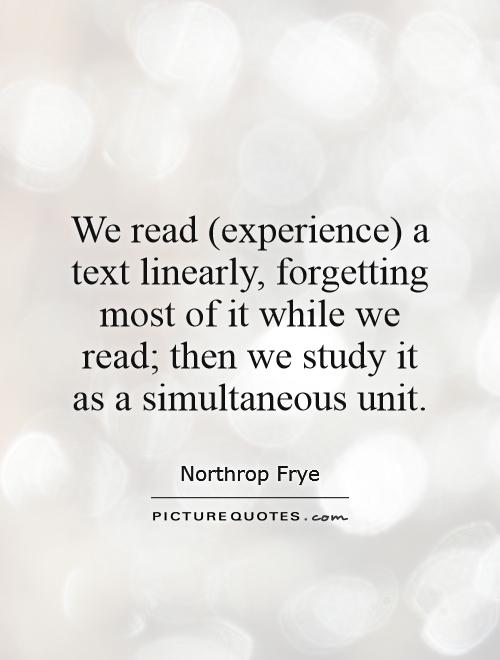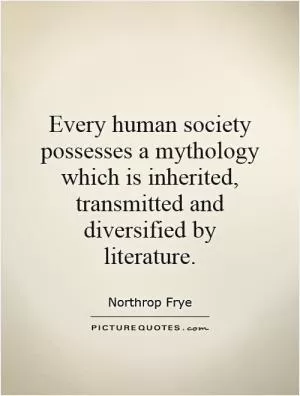We read (experience) a text linearly, forgetting most of it while we read; then we study it as a simultaneous unit

We read (experience) a text linearly, forgetting most of it while we read; then we study it as a simultaneous unit
Northrop Frye, a renowned literary critic and theorist, once stated that we read or experience a text linearly, forgetting most of it while we read, and then we study it as a simultaneous unit. This statement sheds light on the complex process of reading and understanding literature, highlighting the different stages through which we engage with a text.When we first read a text, whether it be a novel, poem, or play, we typically approach it in a linear fashion. We start at the beginning and progress through the text sequentially, absorbing the information as we go along. However, as Frye suggests, we often forget much of what we have read as we move through the text. This is because our brains are constantly processing new information and discarding what is deemed less important or relevant. This selective retention is a natural part of the reading process and allows us to focus on the key ideas and themes of the text.
After we have read a text linearly, we may then study it as a simultaneous unit. This involves going back and revisiting the text as a whole, rather than in a linear fashion. By studying the text as a simultaneous unit, we are able to see the connections between different parts of the text and gain a deeper understanding of its overall structure and meaning. This process of studying the text as a whole allows us to appreciate the complexities and nuances of the work in a way that may not have been possible during our initial linear reading.
Frye's statement also speaks to the idea that reading is a dynamic and ongoing process. We may read a text multiple times, each time gaining new insights and understanding. By approaching a text both linearly and as a simultaneous unit, we are able to engage with it on multiple levels and uncover its deeper meanings and themes.












 Friendship Quotes
Friendship Quotes Love Quotes
Love Quotes Life Quotes
Life Quotes Funny Quotes
Funny Quotes Motivational Quotes
Motivational Quotes Inspirational Quotes
Inspirational Quotes